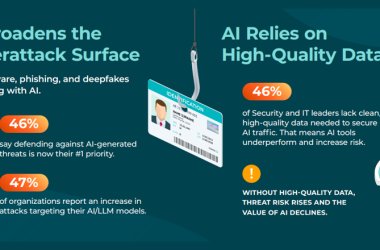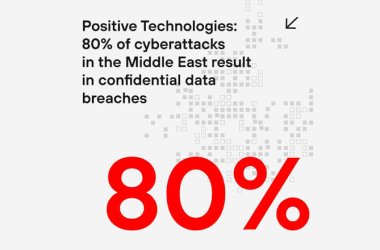
Malicious AI tools, phishing attacks aimed at new hires, skills pressures, work-from-home complexities and an ongoing rise in cyberthreats such as ransomware will challenge organisations and their cybersecurity efforts in the coming year. These are the top predictions for the Middle East in 2023, from email and collaboration security company, Mimecast.
Organisations are already preparing for new waves of cyber-attacks this year. Traditional attacks such as phishing and ransomware are set to continue, along with more sophisticated social engineering attacks that are increasingly hard to combat. Coupled with the increased availability of complex AI tools, a new wave of attacks is set to plague organisations who are not equipped to quickly detect and deter multifaceted cyberthreats.
To help organisations across the region better understand where they should invest time and resources to improve their cyber resilience against a broad range of attack types, various Mimecast experts have provided their key insights into what the 2023 threat landscape may hold:
New jobs attract new problems
With new employees joining companies at the beginning of the year, there will be an increase in phishing attacks that are engineered to look like congratulatory emails from senior executives. New hires may receive an influx in emails that masquerade as LinkedIn connection requests or onboarding information but are in fact fake landing pages to harvest credentials for account takeover fraud. To protect employees, organisations will need to provide thorough security protocols and offer regular, ongoing cyber awareness training.
Home security is a new priority
As a significant portion of the workforce continues to work from home, security teams face a new area of concern. The generally lower levels of security for home Wi-Fi networks connected to corporate devices and laptops makes it easier for attackers to potentially infiltrate corporate networks. In 2023, expect a shift in companies rolling out tighter BYOD policies, or offering separate home networking equipment for all employees working from home.
The evolution of ransomware
Combating ransomware will continue to be a top priority for organisations, and while the complexity of these attacks has increased, most businesses’ ransomware defences have not evolved to keep up. Seventy-five percent of businesses in the UAE reported they experienced a ransomware attack in the past year, with 44% reporting a loss in revenue due to a ransomware attack, according to Mimecast’s State of Ransomware Readiness 2022 report. Greater investment into teams, tools and technologies is needed: 94% of global cybersecurity leaders believe more budget is required to combat ransomware.
Keeping an eye on AI
There is growing concern over the use of AI to enhance the effectiveness of cyberattacks. In 2023, threat actors are likely to take social engineering to the next level, levering the growing power of AI voice cloning technology to enhance their impersonation attacks. The use of audio deepfakes will be combined with compromised email and collaboration accounts to improve the hit rate of attacks.
Strength in numbers
With most security teams stretched thin as they protect organisations and data against attack, expect a continued migration of security teams outsourcing various components of their security practice to MSPs, MSSPs, and SOC-as-a-Service providers. Larger MSSPs oversee hundreds and thousands of customers, making it more likely that they have seen alerts before and know how to deal with them, which is not always the case for in-house teams. Cybersecurity technology companies will improve their integration with MSSPs: Mimecast for example integrates with more than 50 MSSPs.
The need for cybersecurity skills
The skills gap in Cybersecurity – particularly in AI/ML expertise – will probably be felt more acutely in 2023. Last year, newsworthy attacks were typically very targeted, methodically planned, but still very manual in nature. Customers will be looking for cybersecurity products that can effectively protect against a multi-stage attack like this. But to detect these attacks, the existing detection systems need to be harmonised effectively and turned into a meta-system. As a result, cybersecurity companies will be looking for more AI/ML expertise to design and implement these meta-systems, in an already tight labour market.
“Cyber risks will continue to get more sophisticated in 2023, and organisations’ protective measures must adapt accordingly to stay ahead of threat actors”, says Werno Gevers, Regional Manager, Mimecast Middle East. “The use of non-corporate devices and email and collaboration tools due to continued hybrid work, will cause greater risk exposure. Organisations need to ensure they are always able to work protected, by implementing security measures that effectively protect communications, data and people”.





